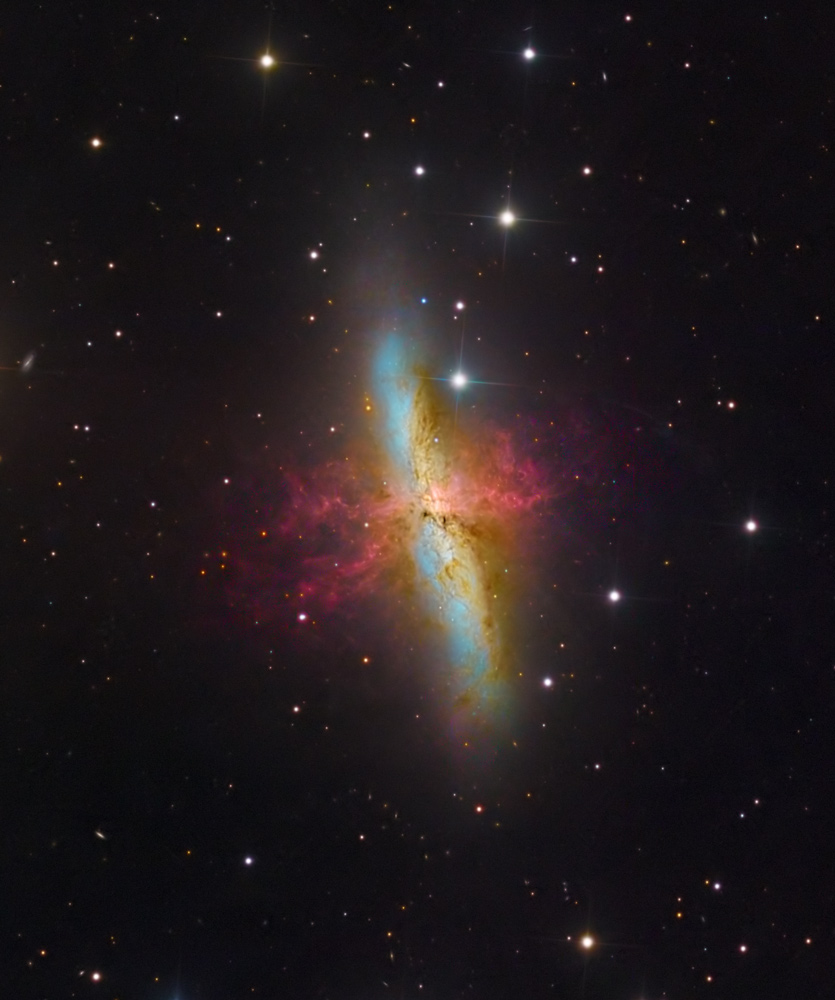

M82 is a magnitude 8.4 galaxy in Ursa Major, presenting to us edge-on. It was long thought to be an "irregular" galaxy, but it was recently discovered that it has two
symmetrical spiral arms emanating from a central bar, so now it is considered to be a spiral galaxy. It is a spectacular example of a "starburst galaxy," having undergone a relatively recent
collision or near-collision with its much larger neighbor, M81 (most estimates put this as having happened about 600 million years ago). The gravitational forces in such events typically cause
a surge in star-forming activity, with young stars being being born in the center of M82 ten times as fast as they are inside our Milky Way galaxy. Radiation and energetic particles from these
newborn stars carve into the surrounding gas, and the resulting galactic wind compresses enough gas to make millions of more stars. The rapid rate of star formation in this galaxy eventually
will be self-limiting. When star formation becomes too vigorous, it will consume or destroy the material needed to make more stars. The starburst will then subside, probably in a few tens of
millions of years.
The red streamers emanating from the center of the galaxy are comprised of ionized hydrogen gas, believed to have been ejected from the center of the galaxy during star formation and the subsequent
high rate of supernovas.
It is estimated to be approximately 12 million light years from earth, and approximately 25,000 light years in diameter.
This is my second time imaging this object. My first was 19 years earlier, with more primitive equipment (smaller scope; much smaller camera chip; low-end mount, all from my front yard in light-polluted
Redmond, Washington). If you would like to compare, it's posted here. You also might be interested
to compare this effort to that of the Hubble (yes, size matters!).
Copyright 2021 Mark de Regt